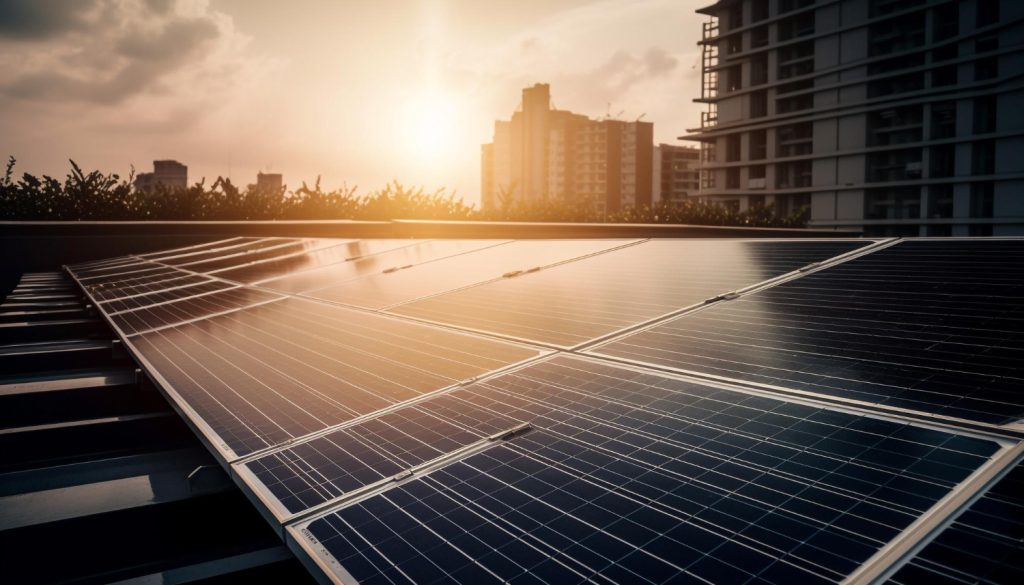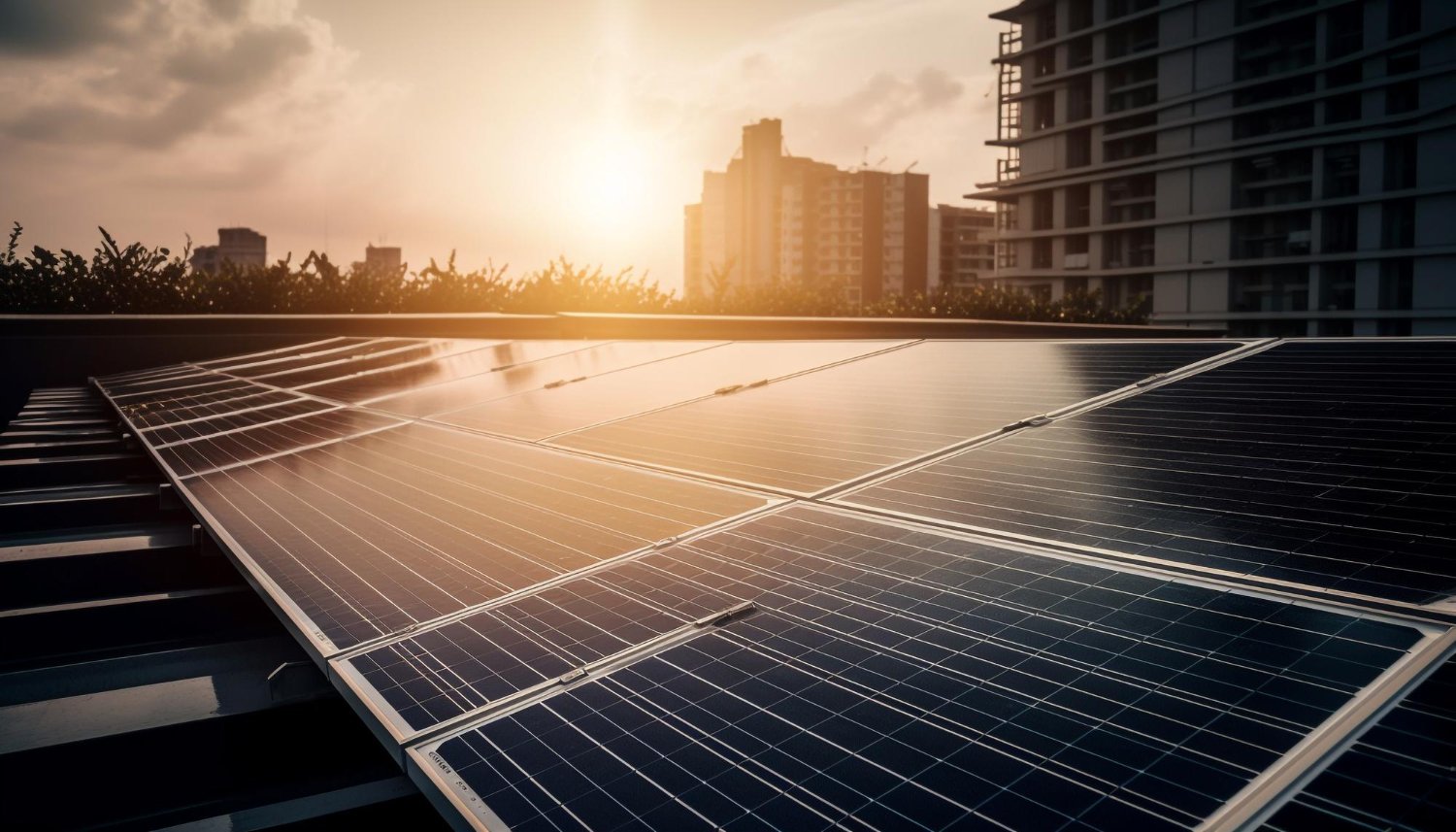Key Considerations for Solar Energy Integration in Building Design
One of the key considerations for integrating solar energy into building design is the orientation and tilt of the structure. The orientation of the building in relation to the path of the sun can significantly impact the efficiency of solar panels. Ideally, buildings should be positioned to maximize sunlight exposure throughout the day. Additionally, the tilt of the solar panels should be optimized based on the building’s latitude to capture the most sunlight possible.

Another important consideration is the shading of the solar panels. It is essential to assess and minimize any potential shading from nearby structures, trees, or other obstructions that could reduce the effectiveness of the solar energy system. Proper placement of solar panels in unshaded areas will ensure maximum energy generation and efficiency. Additionally, considering the roof material and load-bearing capacity is crucial when integrating solar panels into building design to ensure structural integrity and longevity of the system.
Innovative Solar Panel Technologies for Building Integration
Innovations in solar panel technologies have significantly impacted building integration, offering more aesthetically pleasing and efficient options for harnessing solar energy. One such technology is transparent solar panels that can be seamlessly integrated into windows and facades, allowing natural light to enter while generating electricity. These transparent solar panels not only enhance the visual appeal of the building but also contribute to its energy sustainability.
Another emerging technology is solar roof tiles, which blend in with traditional roofing materials while capturing solar energy. These roof tiles are designed to be durable, weather-resistant, and easy to install, making them a practical choice for both new construction projects and renovations. By incorporating these innovative solar panel technologies into building design, architects and developers can optimize energy efficiency and reduce the environmental footprint of buildings.
Benefits of Solar Energy Integration in Building Design
Solar energy integration in building design offers a multitude of advantages that can significantly impact both the environment and the building owner. Firstly, incorporating solar panels into the design can lead to substantial cost savings on energy bills over time. By harnessing the power of the sun, buildings can generate their own electricity, reducing reliance on traditional energy sources and decreasing utility expenses. Additionally, solar energy integration can potentially increase the value of a building, as more and more individuals and businesses are placing value on sustainable and eco-friendly properties. This can be especially advantageous for property owners looking to sell or lease their buildings in a market where sustainable features are becoming increasingly sought after.
Another key benefit of solar energy integration in building design is the positive impact it has on the environment. By utilizing renewable energy sources like solar power, buildings can significantly reduce their carbon footprint and overall greenhouse gas emissions. This contributes to mitigating climate change and promoting a more sustainable future for generations to come. Furthermore, solar energy integration can enhance the resilience of buildings by providing a reliable source of energy that is not subject to fluctuations in energy prices or supply. This can be particularly valuable during times of power outages or energy shortages, ensuring that critical functions within buildings can continue uninterrupted.
Challenges Faced in Implementing Solar Energy Integration in Building Design
One of the main challenges faced in implementing solar energy integration in building design is the high upfront cost associated with installing solar panels and other necessary equipment. Many building owners and developers are hesitant to invest in solar energy systems due to the initial expenses involved. Additionally, the return on investment may not be immediately evident, which can make decision-makers reluctant to commit to integrating solar energy solutions into their building designs.
Another significant challenge is the need for skilled professionals who have the expertise to design and install solar energy systems efficiently. There is a shortage of trained workers in the solar energy industry, which can delay projects and increase costs. Building designers and developers need access to knowledgeable professionals who can help them navigate the complexities of solar energy integration and ensure that systems are installed correctly and effectively.
Strategies for Maximizing Solar Energy Efficiency in Building Design
To maximize solar energy efficiency in building design, it is crucial to carefully consider the orientation and placement of solar panels. By positioning panels to receive the most sunlight throughout the day, buildings can optimize their energy production potential. Additionally, incorporating smart technology and sensors can help monitor energy consumption patterns and adjust solar energy systems accordingly to maximize efficiency.
In addition to design considerations, implementing energy storage solutions can further enhance the efficiency of solar energy integration in building design. Battery storage systems allow excess solar energy to be stored for later use, increasing self-consumption and reducing reliance on the grid during peak hours. By integrating storage technology into the overall design strategy, buildings can achieve greater energy independence and resilience, ultimately maximizing the efficiency of their solar energy systems.
• Carefully consider the orientation and placement of solar panels
• Position panels to receive the most sunlight throughout the day
• Incorporate smart technology and sensors to monitor energy consumption patterns
• Adjust solar energy systems accordingly to maximize efficiency
• Implement energy storage solutions for enhanced efficiency
• Battery storage systems allow excess solar energy to be stored for later use
• Increase self-consumption and reduce reliance on the grid during peak hours
• Achieve greater energy independence and resilience by integrating storage technology into design strategy
Case Studies of Successful Solar Energy Integration in Building Design
Solar energy integration in building design has been gaining momentum as architects and engineers incorporate innovative solutions to harness renewable energy sources. One notable case study is the Bahrain World Trade Center, where three massive wind turbines were integrated into the structure to generate electricity. This innovative approach not only reduced energy consumption but also showcased the architectural ingenuity in combining aesthetics with sustainability.
Another successful example of solar energy integration can be seen in the Pearl River Tower in Guangzhou, China. This skyscraper was designed with solar panels covering its facade to maximize energy production. Through careful planning and collaboration between architects and solar energy experts, the building was able to reduce its carbon footprint significantly while still maintaining a sleek and modern design aesthetic. Such case studies highlight the benefits of incorporating solar energy solutions into building design for a more sustainable future.
Importance of Collaboration between Architects and Solar Energy Experts in Building Design
Architects play a crucial role in shaping the aesthetics and functionality of buildings, while solar energy experts bring specialized knowledge on sustainable energy solutions. By collaborating closely from the early stages of a project, architects and solar energy experts can ensure that solar integration is seamlessly incorporated into the building design. This collaboration allows for the optimization of solar panel placement, orientation, and overall system design to maximize energy production and efficiency.
Furthermore, the joint efforts of architects and solar energy experts can lead to innovative and creative solutions that seamlessly blend solar technology with the overall design concept of the building. This integration not only enhances the visual appeal of the structure but also showcases a commitment to sustainability and environmental consciousness. Through effective collaboration, architects can leverage the technical expertise of solar energy experts to create buildings that not only meet the functional needs of occupants but also contribute positively to the environment by harnessing the power of solar energy.
Financial Incentives for Solar Energy Integration in Building Design
When considering the integration of solar energy in building design, it is essential to take into account the various financial incentives available to support such initiatives. One common incentive is the federal Investment Tax Credit (ITC), which allows building owners to deduct a percentage of the cost of installing a solar energy system from their federal taxes. This significant financial benefit can help offset the initial investment required for integrating solar panels into building designs.
In addition to the federal ITC, many states and local governments offer their own incentives for solar energy integration, such as rebates, grants, and performance-based incentives. These incentives can further reduce the overall costs of implementing solar energy systems in building designs, making them more financially feasible for property owners. By taking advantage of these financial incentives, building designers and owners can not only lower their upfront expenses but also enjoy long-term energy savings and environmental benefits.
Environmental Impact of Solar Energy Integration in Building Design
Solar energy integration in building design has a significant positive impact on the environment. By harnessing the power of the sun to generate electricity, buildings can reduce their dependence on fossil fuels, thereby decreasing greenhouse gas emissions and mitigating climate change. Traditional energy sources such as coal and natural gas contribute to air and water pollution, while solar energy is a clean and renewable alternative that helps to preserve our planet’s natural resources.
In addition to reducing carbon emissions, solar energy integration in building design also helps to decrease the demand for non-renewable resources like coal, oil, and gas. By utilizing solar panels to generate electricity, buildings can operate more sustainably and efficiently, leading to a decrease in overall energy consumption and a smaller ecological footprint. This shift towards renewable energy sources is essential in minimizing the environmental impact of buildings and moving towards a more sustainable future.
Future Trends in Solar Energy Integration for Building Design
As technology continues to advance, the future of solar energy integration in building design looks promising. One emerging trend is the development of more aesthetically pleasing solar panels that can seamlessly blend into the architectural design of a building. This innovation aims to overcome the traditional barrier of solar panels being viewed as an eyesore, making them more attractive for integration into various building types.
Another trend on the horizon is the rise of building-integrated photovoltaics (BIPV), which involves incorporating solar harvesting elements directly into the building envelope. This approach not only provides renewable energy generation but also enhances the overall functionality and efficiency of the building. With BIPV systems becoming more efficient and cost-effective, we can expect to see an increase in their adoption across a wide range of building projects in the future.
Regulatory Requirements for Solar Energy Integration in Building Design
When integrating solar energy systems into building designs, it is crucial to adhere to specific regulatory requirements set forth by local, state, and federal agencies. These regulations help ensure the safety, reliability, and efficiency of solar energy installations, as well as promote standardization and compliance with building codes. Building owners and designers must familiarize themselves with these requirements to avoid potential legal issues and ensure that their solar energy integration projects meet all necessary criteria.
Some of the common regulatory requirements for solar energy integration in building design include obtaining permits for installation, complying with zoning regulations, and meeting electrical and building code requirements. Additionally, building owners may need to submit detailed plans and specifications for approval before proceeding with the installation of solar panels or other solar energy systems. By following these regulatory requirements, stakeholders can ensure that their solar energy integration projects are carried out safely and in accordance with established standards.
Maintenance and Monitoring of Solar Energy Systems in Building Design
Proper maintenance and monitoring are essential for ensuring the efficient functioning of solar energy systems integrated into building design. Regular maintenance tasks may include inspecting panels for damage, cleaning surfaces to optimize sunlight absorption, and checking connections for any issues that may impact performance. Monitoring systems allow for real-time tracking of energy production, enabling timely detection of any abnormalities that may require attention.
Neglecting maintenance and monitoring can lead to decreased energy production, increased operation costs, and potential system failures. By establishing a routine maintenance schedule and utilizing monitoring technology, building owners can ensure that their solar energy systems are operating at peak performance levels. This proactive approach not only maximizes the benefits of integrating solar energy into building design but also prolongs the lifespan of the system, ultimately resulting in long-term cost savings and environmental benefits.
Training and Education for Professionals in Solar Energy Integration in Building Design
Professionals involved in solar energy integration for building design must possess a solid foundation of technical knowledge and skills to effectively incorporate solar technologies into architectural plans. As the demand for sustainable building practices continues to grow, it is imperative that individuals working in this field stay updated on the latest advancements and best practices in solar energy integration. Specialized training programs and continuing education courses can provide professionals with the necessary expertise to design, install, and maintain solar energy systems in buildings efficiently.
In addition to technical training, professionals in solar energy integration must also acquire a comprehensive understanding of regulatory requirements, financial incentives, and environmental considerations related to solar technologies. Collaborating with experts in the field and participating in workshops or conferences can enhance professionals’ knowledge base and help them navigate the complex landscape of building design with integrated solar solutions. By investing in ongoing education and professional development, practitioners can contribute to the widespread adoption of solar energy in building design and play a vital role in shaping the future of sustainable architecture.
Additionsl Resources:
[catlist categorypage=”yes”]
[newsletter]
Table of Contents
Categories:
[categories orderby=name]
Latest Posts:
[sbs_latest_posts]
FAQs:
What are some key considerations for integrating solar energy into building design?
Key considerations include building orientation, shading, roof pitch, and available space for solar panels.
What are some benefits of integrating solar energy into building design?
Benefits include reduced energy costs, decreased carbon footprint, increased property value, and potential for energy independence.
What are some challenges faced in implementing solar energy integration in building design?
Challenges may include high upfront costs, limited space for solar panels, regulatory hurdles, and technical complexities.
How can solar energy efficiency be maximized in building design?
Strategies for maximizing solar energy efficiency include proper system sizing, optimized panel placement, use of energy storage solutions, and regular maintenance.
Why is collaboration between architects and solar energy experts important in building design?
Collaboration ensures that solar energy systems are seamlessly integrated into the overall design, maximizing efficiency and aesthetics.
Are there financial incentives available for solar energy integration in building design?
Yes, financial incentives such as tax credits, rebates, and financing options are often available to offset the cost of solar energy systems.
What is the environmental impact of solar energy integration in building design?
Solar energy integration reduces reliance on fossil fuels, leading to lower greenhouse gas emissions and decreased environmental impact.
What are some future trends in solar energy integration for building design?
Future trends may include advancements in solar panel technology, increased focus on energy storage solutions, and integration of smart building technologies.
What are some regulatory requirements for solar energy integration in building design?
Regulatory requirements may vary by location but typically include building codes, zoning regulations, and permit approvals for solar energy systems.
What is involved in the maintenance and monitoring of solar energy systems in building design?
Maintenance may include regular cleaning of panels, inspections for damage or wear, and monitoring of system performance to ensure optimal efficiency.


